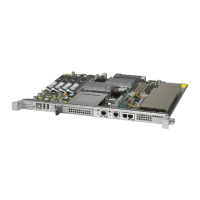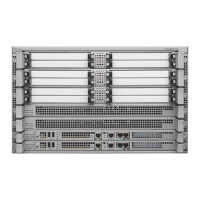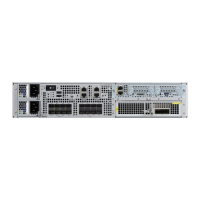To verify the configuration of all PVCs on an interface, use the show atm vc interface atm command:
Router# show atm vc interface atm 0/2/2.1
VCD / Peak Av/Min Burst
Interface Name VPI VCI Type Encaps SC Kbps Kbps Cells St
0/2/2.1 1 2 32 PVC SNAP UBR 149760 UP
Configuring Virtual Circuit Classes
When multiple PVCs use the same or similar configurations, you can simplify the Cisco ASR 1000 Series
Router’s configuration file by creating virtual circuit (VC) classes. Each VC class acts as a template, which
you can apply to an ATM subinterface, or to individual PVCs.
When you apply a VC class to an ATM subinterface, all PVCs created on that subinterface inherit the VC
class configuration. When you apply a VC class to an individual PVC, that particular PVC inherits the class
configuration.
You can then customize individual PVCs with further configuration commands. Any commands that you
apply to individual PVCs take precedence over those of the VC class that were applied to the interface or to
the PVC.
To create and configure a VC class, and then apply it to a subinterface or individual PVC, use the following
procedure beginning in global configuration mode:
SUMMARY STEPS
1.
Router(config)# vc-class atm vc-class-name
2.
Router(config-vc-class)# configuration-commands
3.
Do one of the following:
•
Router(config-vc-class)# interface atm slot/subslot/port
•
Router(config-vc-class)# interface atm slot/subslot/port.subinterface [multipoint | point-to-point]
4.
Do one of the following:
•
Router(config-if)# class-int vc-class-name
•
Router(config-subif)# class-int vc-class-name
5.
Do one of the following:
•
Router(config-if)# pvc [name ] vpi /vci
•
Router(config-subif)# pvc [name ] vpi /vci
6.
Router(config-if-atm-vc)# class-vc vc-class-name
7.
Router(config-if-atm-vc)# configuration-commands
8.
Router(config-if)# end
Cisco ASR 1000 Series Aggregation Services Routers SIP and SPA Software Configuration Guide, Cisco IOS
XE Everest 16.5
78 OL-14127-17
Configuring the ATM SPAs
Configuring Virtual Circuit Classes

